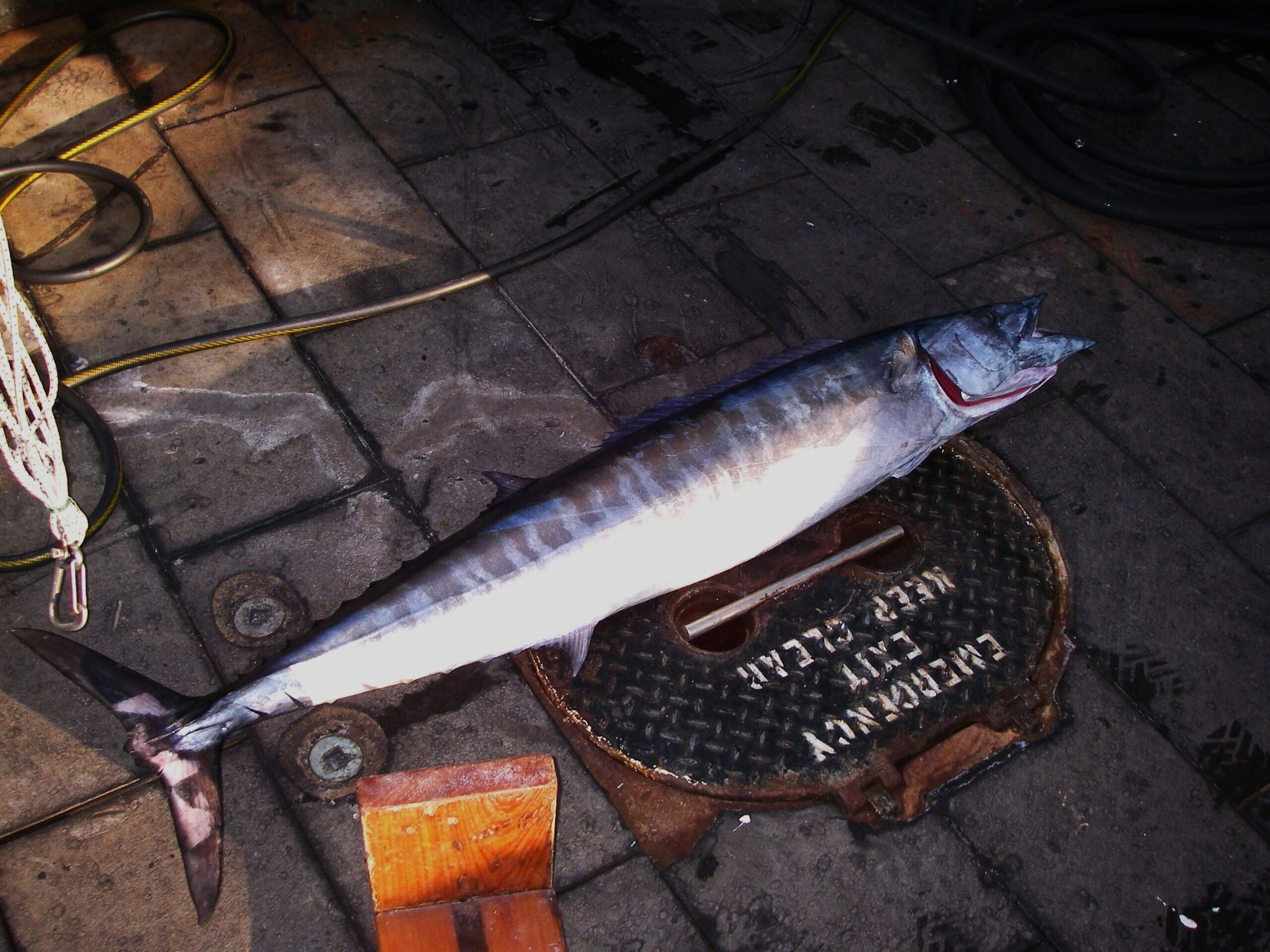Where Do Wahoo Spend Time in the Water Column?

Satellite tagging data reveals that wahoo prefer warm waters and visit a range of depths.
Research Need
The wahoo is a prized, large pelagic species — a fish that doesn’t live close to the bottom or near the shore. The species is present in Gulf Stream waters off of North Carolina’s coast. A member of the family Scombridae (the same fisheries family that includes tunas and mackerels), wahoo also inhabit tropical, subtropical and warm, temperate waters elsewhere around the globe. Anglers like to catch wahoo because of their often bait-crashing, aggressive feeding behavior and their good-to-eat meat.
While traditional tagging studies have shown that wahoo can travel long distances relatively quickly, more detailed information was necessary to define the fish’s preferences for habitat, depth and temperature between the often long periods of tag deployment and retrieval.
Additionally, researchers required a better understanding of wahoo movement in the water column, because the fish is often associated with other, more highly exploited species, like yellowfin tuna.
What did they study?
Scientists at Florida Atlantic University, working in cooperation with an experienced charter captain and crew, captured and tagged four wahoo in the Florida Straits, between East Florida and the Bahamas (two in February and two in October). Fish size ranged from 54 to 58 inches and 44 to 50 pounds.
The tags recorded temperature and depth data every 30 to 60 seconds and then transmitted data via satellite after the tag had popped off the animal and floated to the surface.
What did they find?
The tags popped off north of their deployment positions at 5, 31, 51 and 111 days and then successfully sent data. The four wahoo spent 45% of their time at depths less than 65 feet and 90% of their time at depths less than 650 feet. Three fish made regular and quick dives to waters deeper than 650 feet.
All of the fish spent 90% of their time in water between 63.5˚F and 81.5˚F. The median water temperature (the temperature separating the upper half of recorded temperatures from the lower half) for the four fish combined was 75.6˚F at night and 74.8˚F during the day.
The distance between the tagging location and pop-off location ranged from 100 to 1,219 miles. Unfortunately, the satellite tags did not provide accurate locations for sites visited in between.
What else did they find?
Unlike such species as yellowfin tuna, wahoo are not “warm-blooded” and do not have the capacity to conserve metabolic heat. This might explain why researchers only recorded wahoo spending brief periods of time in deeper, cooler waters. The study suggests that wahoo are not likely able to expand their geographic range beyond areas where quick returns to warm water are possible.
Anything else?
In just a period of 2 hours, wahoo were able to move between waters that differed by 53˚F and 650 feet. However, one of the four behaved differently from the others. This fish spent more time in shallower water during the day and less time in deeper water during the night. This underscores the importance of tagging a larger number of fish in future studies.
Reading
Theisen, Tim C. and Baldwin, John D. 2012. Movements and depth/temperature distribution of the ectothermic Scombrid, Acanthocybium solandri (wahoo), in the western North Atlantic. Mar. Biol., Vol. 159, pp 2249–2258. DOI 10.1007/s00227-012-2010-x
Institute of Wildlife Sciences and NOAA Fisheries Marine Finfish Initiative (MARFIN) supported this study.
Summary compiled by Scott Baker
Lead photo: Wahoo, Gulf of Mexico, courtesy of NOAA
The text from Hook, Line & Science is available to reprint and republish, but only in its entirety and with this attribution: Hook, Line & Science, courtesy of Scott Baker and Sara Mirabilio, North Carolina Sea Grant. HookLineScience.com
- Categories:



